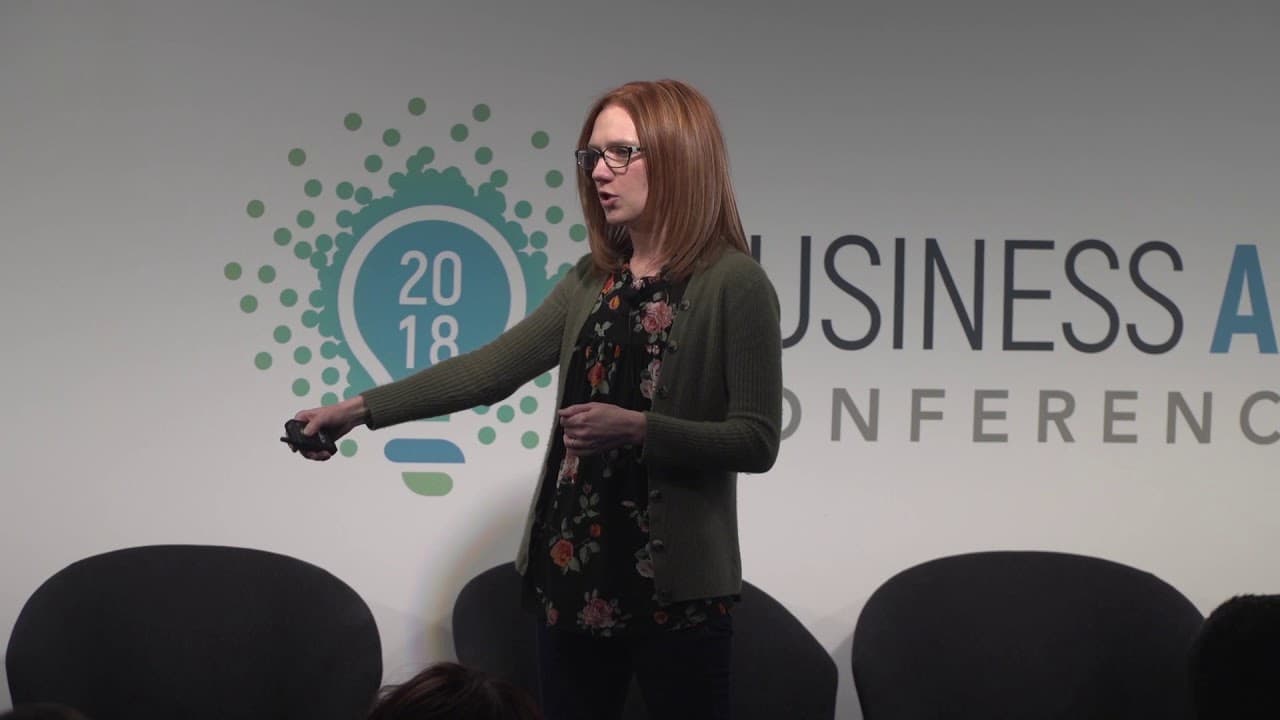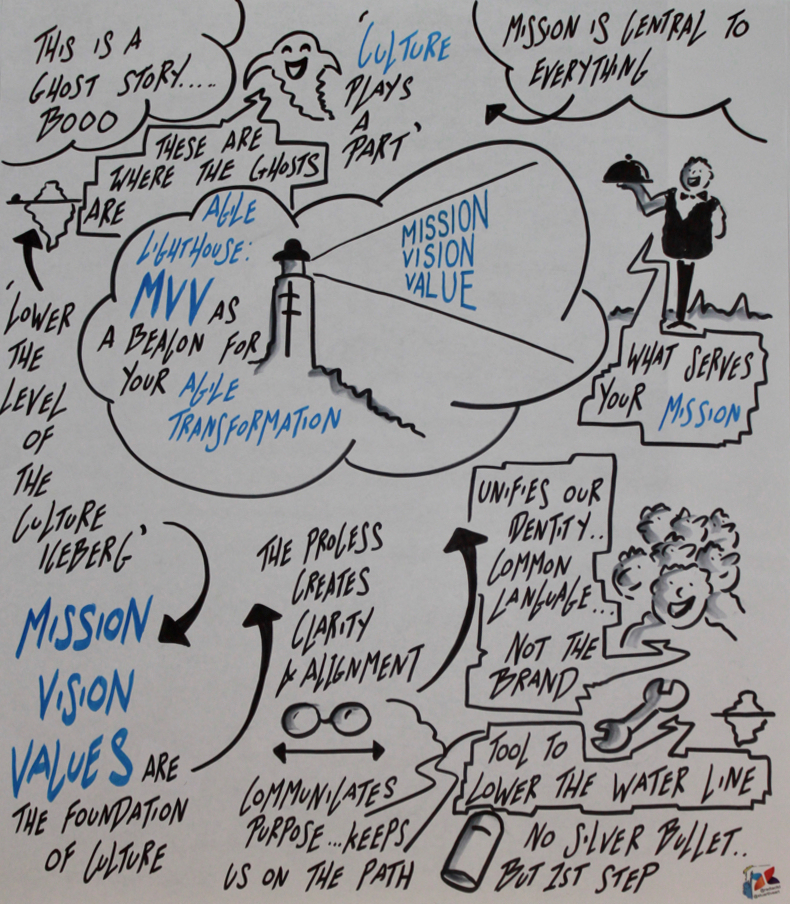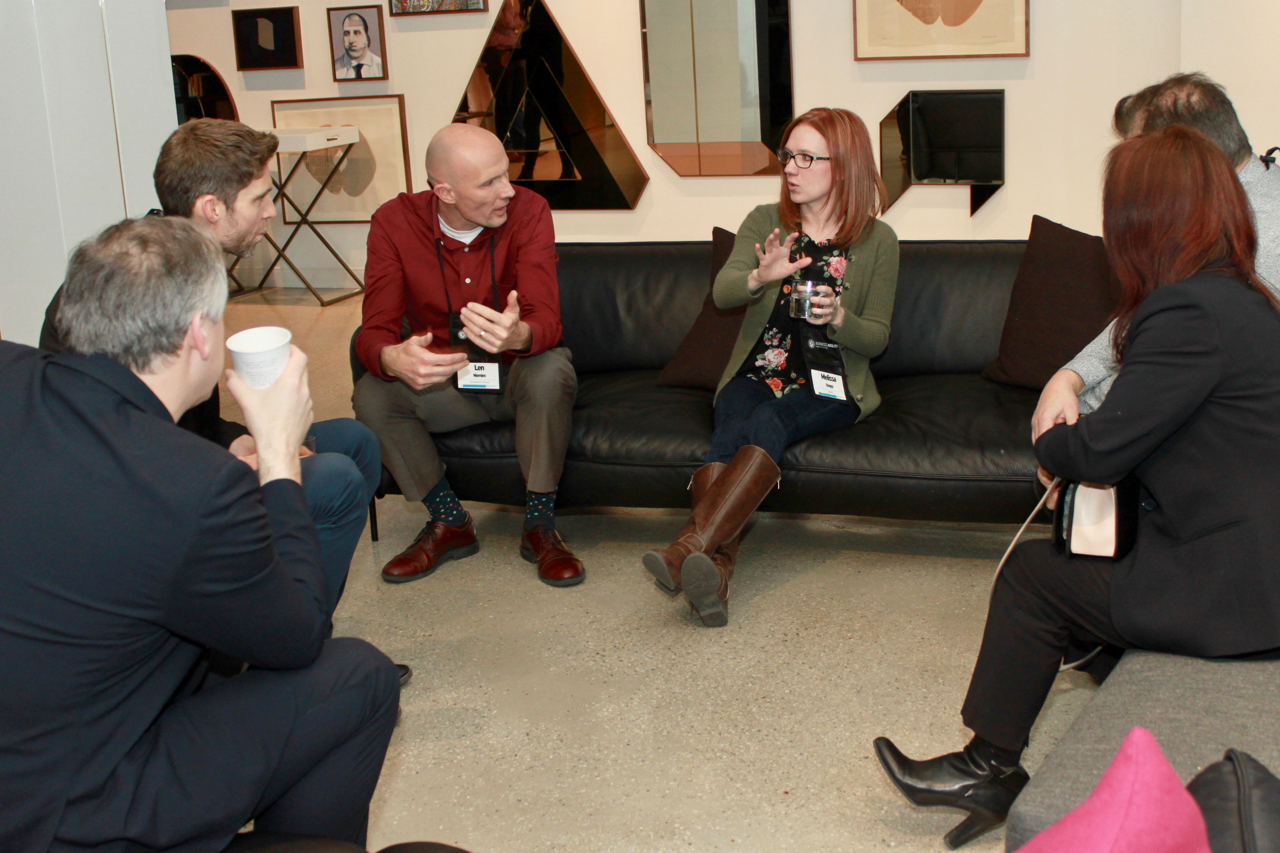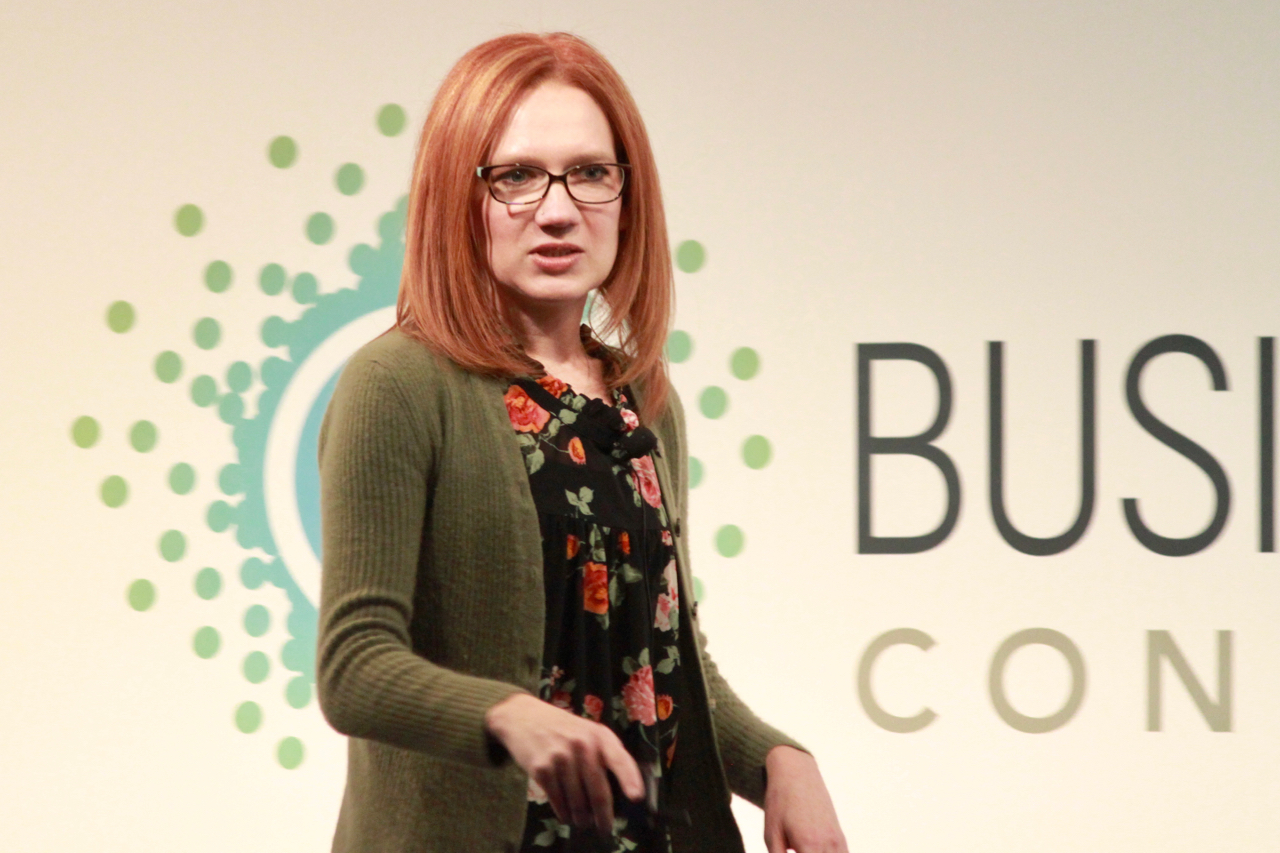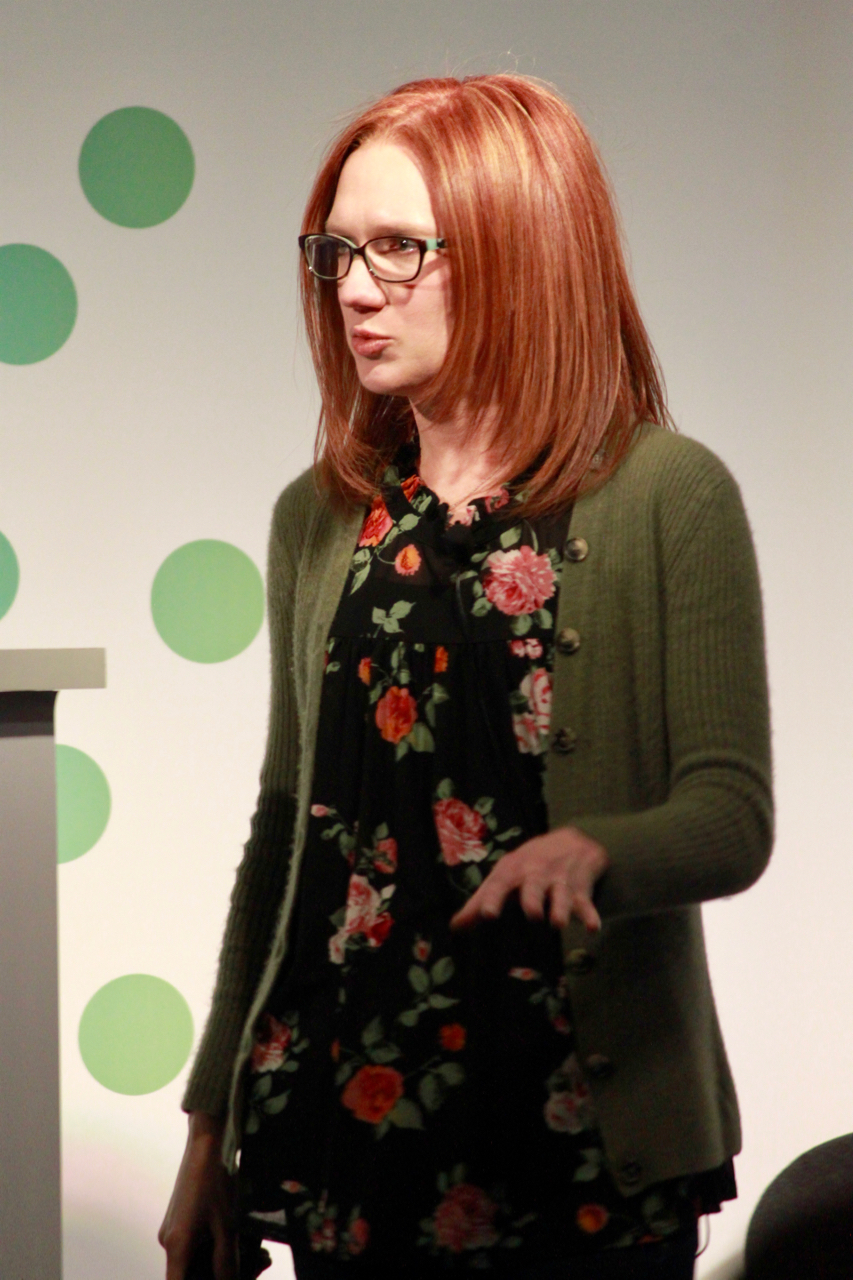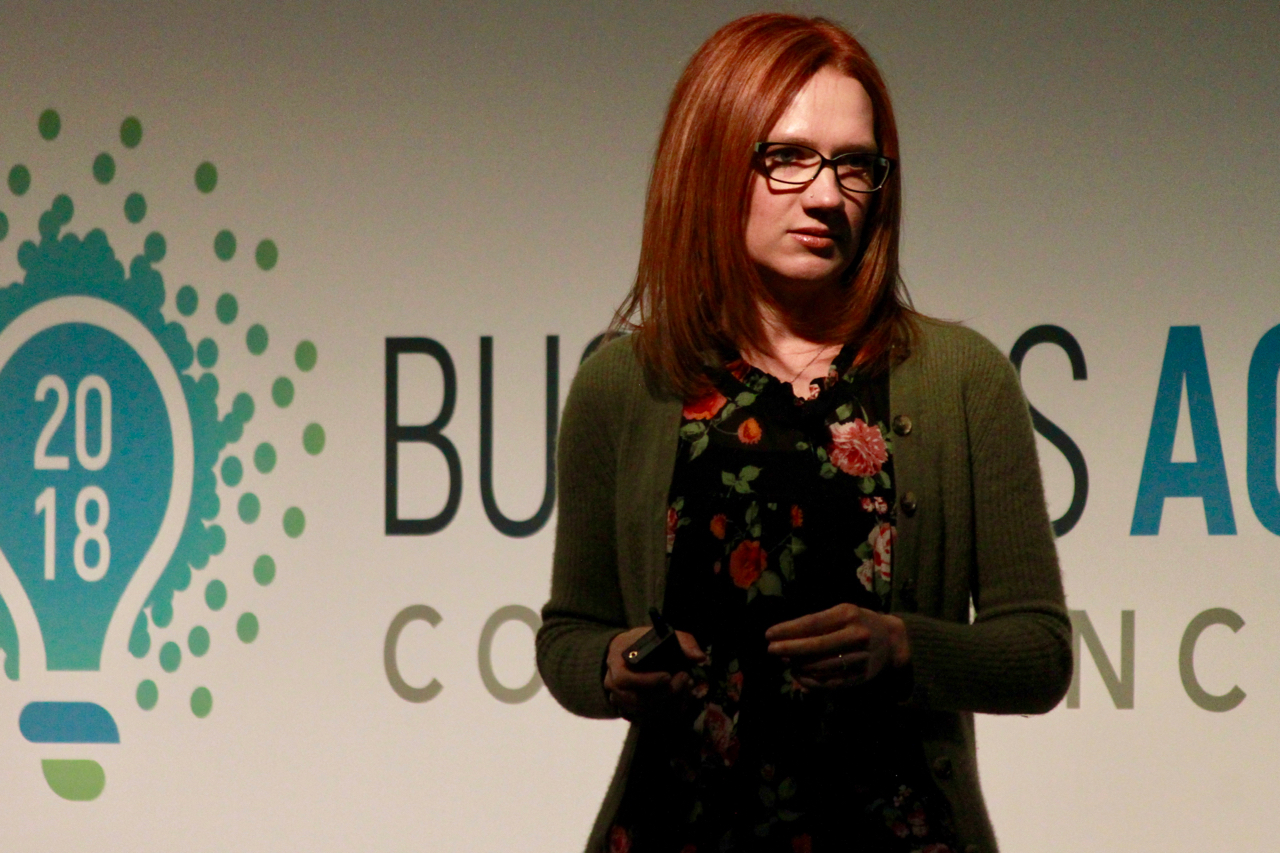Thank you! Are you ready for this? This is a ghost story.
No self-respecting lighthouse would be without a couple of resident ghosts. But this is also a story about discovery—about the little moments that come together to create an agile culture. And yes, I am totally going to mix my metaphors throughout this entire talk, so just be ready for that!
The Big Green Ghost
Let’s start with our ghost. Oh, he’s so sweet, right? Looks very friendly.
When I was 20 years old, I got my first big-girl job at one of the best places to work in America—literally. I worked at the SCOOTER Store, which made the list of best places to work year after year.
At the SCOOTER Store, our mission was central to everything we did. It wasn’t just pretty words on a wall; it was the driver and purpose behind everything. I worked there for 12 years, left about six years ago, and I can still tell you our mission: to deliver freedom and independence to people with limited mobility.
We provided mobility devices to help people move around their homes when they couldn’t otherwise walk. Because our mission was so central, we had a strong sense of identity and purpose. You could say we had a very healthy and explicit culture.
Defining Culture
How many times have we heard the word “culture” today? We use it all the time, but it comes with a lot of baggage—good baggage, bad baggage. It might be Prada, or it might be Walmart, but it’s baggage nonetheless.
So, let’s put a definition around it. For the purposes of this talk, culture is the traditions and behaviors of people and groups in an organization. Two key words: habits and behaviors. Keep these in mind because I’ll be talking about them a lot.
The Culture Iceberg
Unless this is your first agile conference, you’ve probably heard the analogy of the culture iceberg. The top of the iceberg represents what we see every day—strategies, tactics, office perks like pool tables and unlimited vacation. These are great, but they aren’t the core of culture.
Below the waterline, we find the real culture: habits, traditions, and behaviors. This is where we see who gets promoted, what’s talked about at the watercooler, which ideas are celebrated, and which are suppressed. This is where the ghosts live—the things that can sneak up on us.
When we talk about organizational culture as a barrier to agility, we see why it’s such a big deal. You hit it before you even see it coming. One way to avoid this iceberg is to lower the waterline—to bring these habits and behaviors into the open, talk about them, and make them part of everyday conversations.
Growth Challenges in an Agile Company
Not too long ago, I worked with a small, remote company based in San Francisco. They were growing rapidly, experiencing a lot of success, and I was helping their IT and software teams implement agile practices.
The executive team approached me and said, “We’d really like your help in developing a growth strategy for our IT department.” But their request made me pause.
The company was growing fast, but they were struggling to scale while maintaining their culture. They had a tight-knit team, and the bigger they got, the more they worried about losing their identity. They wanted to grow, but they weren’t sure how to keep all the great things that made them special.
Red Flags and the First Ghost
There were some red flags. They were hitting bumps in their agile journey due to misaligned expectations and unspoken assumptions. And that’s when I was visited by my first ghost—
The Ghost of Beloved Company Past.
This friendly ghost reminded me of the SCOOTER Store and how everything we did was centered around our mission. Our company goals and department goals were all derived from that mission, giving us clarity, alignment, and purpose.
At the SCOOTER Store, decision-making was simple: Does this serve our mission?
So, I realized that before this company could start creating a growth strategy, they first needed to define who they were. Who did they want to be? Who did they want to invite on this journey?
Mission, Vision, and Values
I proposed that the leadership team work with me to define their mission, vision, and values. They already had a mission statement on their website—but it was long, vague, and the only person who knew it was the marketing manager who wrote it five years ago.
A mission statement shouldn’t just be a nice marketing slogan. It should be a unifying rally cry, guiding hiring decisions and company growth.
The leadership team agreed, and off we went.
Defining Identity and Direction
Mission, vision, and values serve as the foundation of culture. They create clarity, alignment, and purpose—giving employees direction and ensuring decisions align with company identity.
- Mission: Who we are, what we do, and for whom.
- Vision: The long-term impact we aim to have—how the world will be different because of our company.
- Values: The behaviors and principles that guide how we interact and operate.
Having this clarity enables autonomy, mastery, and purpose—core elements of an engaged workforce.
The Process
To begin, we sent a company-wide survey with three questions:
- For mission: Who are we, what do we do, and for whom?
- For vision: How will we change the world?
- For values: How should we behave with one another?
Then, I held a series of guided discussions with leadership. Interestingly, while their visions and missions varied widely, their values were well-aligned—not just among themselves, but across the company.
The Ghosts of Assumptions
During this process, we were visited by The Ghost of the Garage Past and The Ghost of Growing Assumptions Future.
These leaders had worked together since their 20s, but as the company grew, their visions began to diverge. They weren’t sitting in a garage anymore, having constant discussions. Suddenly, they realized they hadn’t talked about some fundamental aspects of their business in years.
Misalignment can be uncomfortable, but I assured them: better to have these conversations now than to realize later that you’ve lost your way.
Rolling It Out
Once we finalized the mission, vision, and values, we launched them in a meaningful way. Since this was a remote company, each employee received a care package with:
- A T-shirt with the new mission
- A poster for their workspace
- Other small branded items
Managers led discussions with their teams—either in person or via video—about what these principles meant for their roles and the company.
Final Thoughts
Culture is built through traditions, habits, and behaviors. Mission, vision, and values lower the waterline, bringing hidden cultural elements into focus. They aren’t a silver bullet, but the process itself fosters alignment and clarity.
Culture isn’t what’s written on a plaque. It’s what’s lived and reinforced every day.
Thank you!

